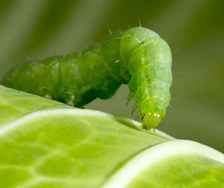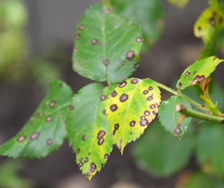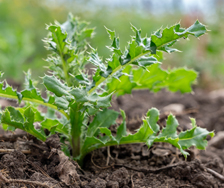Yates Account
Join now
Create a Yates account today!
Sign up to join the Yates Garden Club for monthly e-mails packed with seasonal inspiration, tips for success & exclusive promotions.
Plus if you’re a Garden Club member you can take part in the Yates Growing Community - a blog to share successes, get advice & win prizes in fun challenges along the way!

Forgot password
Enter the email address associated with your account, and we'll email you a new password.
Tortricidae spp.

What are Leafroller Moths?
New Zealand has about 185 different species of Leafroller Moths; some of them are fruit tree pests. They all belong to the Tortricidae family of moths, which also includes the notorious Codling Moth as a member.
The ‘leafroller’ family name comes from the habit of rolling up and joining the edges of leaves together with silky webbing, to create a protective shelter for the caterpillar larvae. However, there are some leafroller species that prefer to tunnel into fruit or plant stems to feed. Both of these habits make the concealed larvae challenging to control with insecticides that kill on contact.
Adult moths don’t cause damage to plants, but their caterpillars certainly do! Caterpillars will chew on a wide range of fruit and leaves, often disfiguring the surface of fruit, or ruining it from the inside.
Prevention is always better than cure, so it’s good to keep an eye on your plants and detect pest damage early. Regular monitoring of your garden will ensure that a major infestation of pest caterpillars doesn’t get a foothold.
There are some native NZ leafroller species that have developed a taste for stonefruit and pipfruit; these are the Greenheaded Leafroller (Planotortrix spp.) and the Brownheaded Leafroller (Ctenopseutis spp.). These pests are commonly encountered in orchards, although they’ll also feed on camellias and some conifers.
There are also some accidentally introduced species of Leafrollers in NZ that are deeply unpopular with fruit growers. The Black-Lyre Leafroller (Cnephasia jactatana) gets an honourable mention for attacking plums and kiwifruit, but we’ll focus on two of the more destructive leafrollers: the Oriental Fruit Moth (Grapholita molesta) and the Light Brown Apple Moth (Epiphyas postvittania). Scroll down for more detail on both of these pests, plus how to control them.

Oriental Fruit Moth (Grapholita molesta)
Ben Sale from UK, CC BY 2.0, via Wikimedia Commons
What is Oriental Fruit Moth?
Oriental Fruit Moth is a common orchard pest in areas North of Manawatū.
Native to China, it has invasively spread throughout much of the world. Oriental Fruit Moth larvae tunnel into fruit (especially peaches and nectarines) and ruin it from the inside.
Adult moths have dark grey wings with mottled lighter patterns. They lay individual white coloured eggs on the leaves of target plants.
At first, larvae are white with a black head, then develop a pinky-red colour as they get larger. After a few weeks of feeding on fruit or shoots, larvae will spin themselves a silky cocoon to pupate in, somewhere on the host tree.
The next generation of moths emerge from the pupae a few weeks later. When the weather gets cold enough, larvae overwinter instead, by delaying their pupation until the spring blossom arrives, to start the cycle over again.

Symptoms of Oriental Fruit Moth
- Visible entrance holes in fruit, often filled with frass (larvae droppings) or a sticky secretion
- Dieback of growing shoots of fruit tree branches, caused by larvae tunnelling into them
- Research indicates that larval infestation also increases the infection rate of brown rot in stonefruit
Plants Impacted
- Peaches
- Nectarines
- Apricots
- Almond
- Apples
- Quince
- Pears
- Plums
- Cherries
How to Control Oriental Fruit Moth
Spring blossoms are the trigger for implementing control measures. As soon as the petals start to fall, it’s time to act to prevent infestation.
Yates Success Ultra Insect Control, which is derived from beneficial soil bacteria, is a very effective way to prevent the Oriental Fruit Moth grub from damaging the fruit.
Start spraying apple and pear trees every 14 days, from petal fall. There can be several generations of moths between flowering and harvest, hence the need for regular ongoing spraying.
The Oriental Fruit Moth does have a number of natural enemies: the parasitoid wasps Glabridorsum stokesii and Xanthopimpla rhopaloceros were deliberately introduced during the 1970s to target leafrollers in orchards. Other predators of leafroller moths are spiders and birds.

Light Brown Apple Moth (Epiphyas postvittana)
by Donald Hobern, CC BY 2.0, via Flickr
What is Light Brown Apple Moth?
Light Brown Apple Moth (sometimes abbreviated as LBAM) is an Australian native that has become an invasive species in many parts of the world besides New Zealand, including Hawaii, California, the United Kingdom, Ireland, France, the Netherlands and Sweden. Accidentally introduced here during the 19th Century, it’s now widespread throughout NZ.
Light Brown Apple Moth larvae will feed on a very wide variety of plants. The species is notoriously polyphagous (i.e. able to feed on a wide range of plants), which has allowed it to spread rapidly outside its usual habitat.
Adult moths are buff-coloured, about 10mm long and shelter amongst foliage during the day.
Eggs start out whitish to pale yellow and turn yellow-green as they mature. The eggs are laid in masses of about 25 to 35 eggs, that look like overlapping fish scales.
Larvae are yellowish green in colour. When first hatched they’re about 1.5mm long but grow to about 15–20mm long. Disturbed larvae wriggle rapidly away or drop down on a silken thread.
Pupae are light brown, spindle-shaped and about 10mm long.
Female moths lay their eggs on the upper surfaces of leaves or fruit. Larvae hatch out and crawl away, or drop away on silk threads, to spread out through the plant. Early-stage Light Brown Apple Moth larvae settle on the underside of leaves and begin to spin a protective web. Bigger larvae will roll up and web the edges of a leaf together, or web two adjacent leaves together, then feed in this protective shelter. Eventually the larvae pupate inside their shelters, from which the next generation of moths emerge a few weeks later.

Symptoms of Light Brown Apple Moth
- Grazed leaf surfaces and holes chewed in leaves
- Leaves rolled into a tube and fastened with silky webs, or multiple leaves webbed together
- Furrows chewed on fruit surfaces
- Grapes chewed, bunches fouled with webbing and frass (larvae droppings)
Plants Impacted by Light Brown Apple Moth
- Apples
- Pears
- Quince
- Strawberry
- Blueberry
- Blackberry
- Raspberry
- Citrus
- Grapes
- Kiwifruit
- Peaches
- Ornamental plants like camellia, fuchsia and roses
- Vegetables, including brassicas, tomatoes, parsley and carrots
- Trees, including radiata pine, Douglas fir and other conifers
- Larvae also breed in weeds like gorse, broom, dock and plantain

How to Control Light Brown Apple Moth
Monitor
You can have an early warning system for adult moths by making a port wine trap. Mix four parts water to one part of port wine in a jar, then suspend it in a susceptible tree. The smell of the fermenting port attracts the moths into the jar, where they drown. Remember a trap (even a pheromone trap) is only a monitoring tool to alert you to the presence of egg-laying moths, it isn’t a complete control method.
Prevent
- Remove weeds, to reduce the number of breeding sites
- Cover susceptible vegetables and berries with fine mesh nets
Control
- Yates Success Ultra Insect Control, which is derived from beneficial soil bacteria, is a very effective way to prevent leafroller grubs from damaging trees or fruit
- Start spraying apple and pear trees every 14 days, from petal fall
- There can be several generations of Light Brown Apple Moth between flowering and harvest, so regular ongoing spraying is important for full control
Natural enemies
In NZ we now have a good mix of deliberately introduced predators, along with a couple of native species that will happily prey on Light Brown Apple Moth larvae.
- Parasitoid wasps Xanthopimpla rhopaloceros and Dolichogenidea tasmanica (both introduced) work alongside our native Glyptapanteles demeter wasp to lay their eggs in or on caterpillars, which is fatal to the caterpillar
- Pales funesta is a NZ native fly that also targets the caterpillars, alongside the introduced Trigonospila brevifacies fly
- Spiders and birds are also predators of Light Brown Apple Moth larvae















Share
Share this article on social media